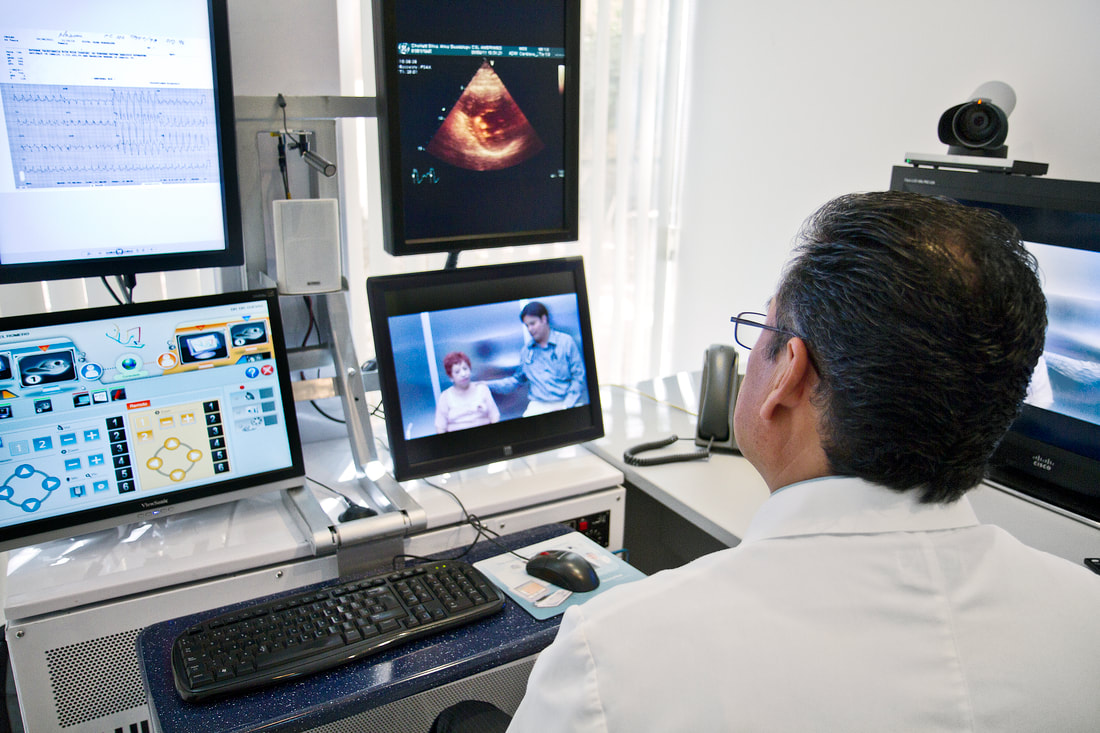Seeing Your Doctor Anywhere, Anytime: The Effects of Telehealth on Healthcare and COVID-193/24/2021 By Elaine Zhu After almost a whole year into quarantine and the pandemic, many of us continue to stay indoors and avoid going outside unless absolutely necessary. However, for some people, especially those with pressing illnesses that need monitoring, going to the doctor’s office is a must. Changes in the traditional method of visiting the doctor’s office are needed to accommodate for these unexpected times in order to reduce transmission to medical staff and patients. Some physicians have turned to a new way to stay connected and engaged with their patients: telehealth. What exactly is telehealth? Telehealth is generally defined as using communication technology and digital information, such as computers or mobile phones, to talk to health care professionals and interact with health care services remotely. For example, a patient can monitor their vital signs, electrocardiogram (ECG), or blood pressure using telehealth technologies and also receive doctor or nurse consultations remotely. Some clinics might also allow virtual appointments through online video calling platforms that allow patients to see doctors or nurses remotely. These virtual appointments can help people who are suffering just from minor illnesses, like a cold or fever, and can also be convenient for people who are physically unable to travel to an in-person appointment. Telehealth can make healthcare more accessible for those with limited mobility and in rural areas. However, without in-person evaluations, telehealth appointments may have limited accuracy for diagnoses. In 2018, around seven million people used telehealth services. More than half of all United States hospitals have a program for telehealth, and more users are expected to start to use telehealth in the near future. It is clear that telehealth is popular with and useful to many hospitals and patients. But how has the COVID-19 pandemic affected the use of technology in medicine? Healthcare officials are currently making temporary policy changes to make it easier for patients to become enrolled for telehealth visits. Medicare and Medicaid recipients now are able to sign up for telehealth services during the COVID-19 pandemic. There has also been some more flexibility given to health care providers by the Office of Civil Rights, which oversees the Health Insurance Portability and Accountability Act (HIPAA). Health care providers that are HIPAA-covered are now able to provide telehealth appointments to patients, using technologies like FaceTime, Facebook Messenger, Google Hangouts, or Zoom, even if these applications do not typically fully comply with all HIPAA regulations. While some people are concerned about security or privacy violations, flexibility during a pandemic is necessary so that chronically ill patients’ needs are met. The new relaxed rules will allow more people to use these accessible platforms for their appointments, making telehealth visits more streamlined and hassle-free for the patient. Furthermore, there seems to be a large boom in telehealth appointments because of the pandemic. A report from the Center for Disease Control released in October 2020 states that there was a 154 percent increase in telehealth appointments in the last week of March 2020, compared to the same time period last year, demonstrating how pandemic-related telehealth policies can expand access to care. The convenience of telehealth appointments is a key factor in helping people stay indoors as much as possible. As the pandemic continues without a clear end in sight, telehealth will play a significant role in ensuring that patients at risk can continue seeing doctors without having to worry about catching COVID-19. It will be exciting to see how modern technology continues to evolve the way that we currently interact with physicians and healthcare providers.
1 Comment
10/18/2021 03:27:53 am
Thanks for sharing information about THE EFFECTS OF TELEHEALTH ON HEALTHCARE AND COVID-19...
Reply
Leave a Reply. |
Categories
All
Archives
April 2024
|

